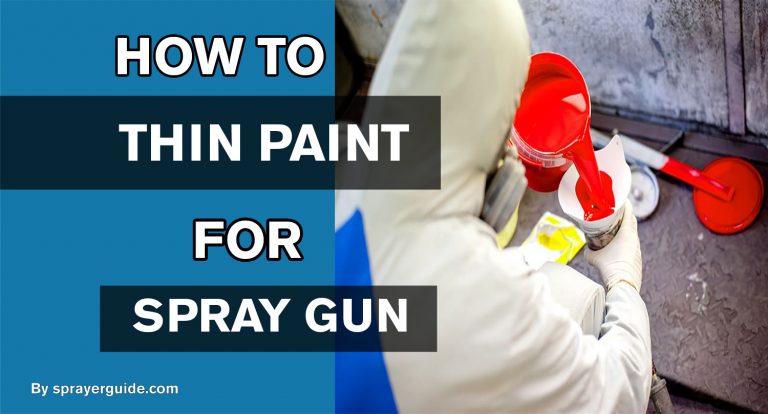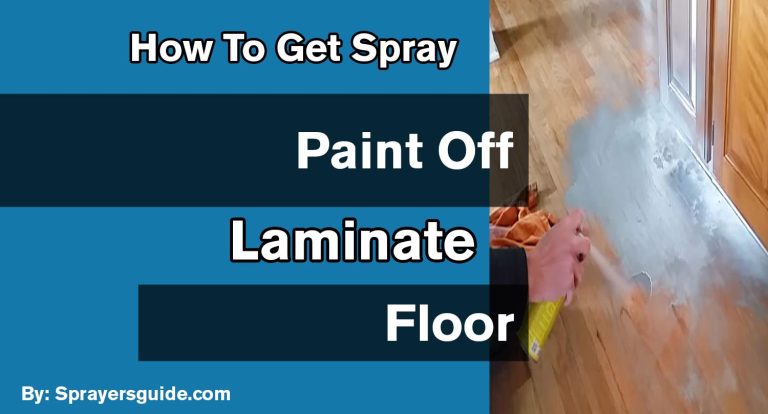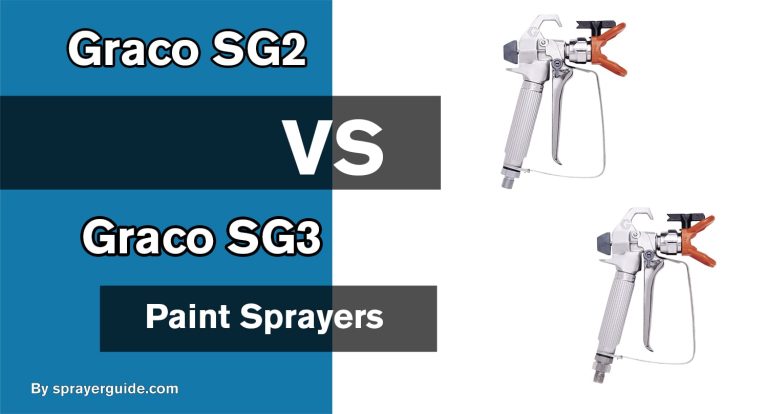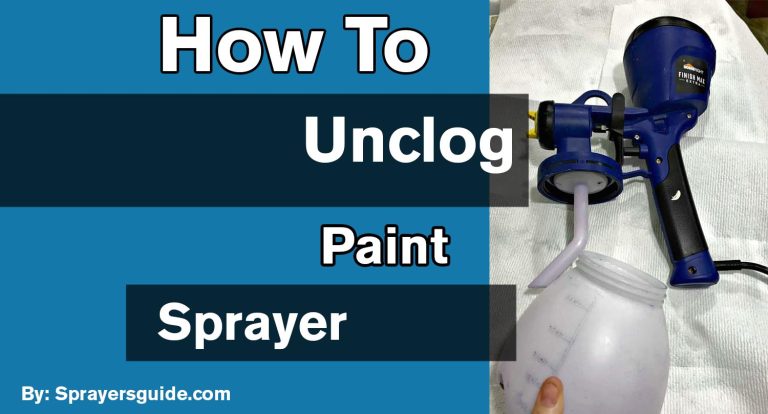A paint sprayer is a machine that uses a pump to force paint through a small hole, creating a fine mist of paint that can be applied to surfaces. Paint sprayers are commonly used to paint cars, furniture, and walls and can be used for indoor and outdoor applications.
Paint sprayers vary in size and power, from small, handheld models to large, industrial-grade machines. The type of paint sprayer you’ll need will depend on the project you’re working on. For example, large jobs like painting a house might require an industrial-grade machine, while smaller projects like painting furniture can be done with a handheld model.
What are its benefits over traditional painting methods?
Spray painting provides several benefits over traditional painting methods. It is much faster, producing a smooth, even finish in a fraction of the time it would take to achieve the same results with a brush or roller. This makes it ideal for large surfaces such as walls and ceilings.
It is also much easier to achieve an even coating with spray paint, as there are no streaks or brush marks to worry about. And because the paint is sprayed on in a fine mist, it dries quickly, meaning you can usually apply a second coat within an hour or so.
Another advantage of spray painting is that it is much less likely to produce drips and runs than traditional painting methods. This means there is less chance of ruining your paint job with unsightly imperfections.
Fast coverage:
A paint sprayer can cover a large area faster than traditional painting methods. The paint is sprayed evenly over the surface rather than brushed or rolled on.
Less mess:
Paint sprayers are much less messy than traditional painting methods. There is very little overspray, and cleanup is easy.
Get into hard-to-reach areas:
A paint sprayer can get into tight spaces and corners that would be difficult to paint with a brush or roller.
Easy to use:
Paint sprayers are relatively easy to use, even for beginners. Just read the instructions carefully and practice on a piece of scrap material before painting your project.
A paint sprayer can save time and effort and produce better results than traditional painting methods. So if you plan on painting a large area or want an easier way to get great results, consider using an airless paint sprayer.
Types of paint sprayers:
Spray guns come in various shapes and sizes, each designed for specific purposes. Here is a quick guide to the different types of paint sprayers available today.
Airless paint sprayers:
Airless paint sprayers use high pressure to force paint through a small tip, creating a fine mist perfect for large surface areas. These sprayers are typically used for exterior jobs like painting walls or fences.
Airless paint sprayers:
Airless paint sprayers use high pressure to force paint through a small tip, creating a fine mist perfect for large surface areas. These sprayers are typically used for exterior jobs like painting walls or fences.
HVLP (high volume, low pressure) paint sprayers:
HVLP paint sprayers use lower air pressure than airless sprayers, making them ideal for interior jobs where you need more control over the paint application. These sprayers are great for detailed work, such as painting trim or cabinets.
Electrostatic paint sprayers:
Electrostatic paint sprayers charge the paint particles with electricity, which allows them to adhere better to surfaces. These sprayers are often used in industrial settings but can also be used for home projects.
How to choose the right paint sprayer for your needs?
Whether you’re a professional painter or a passionate DIYer, having the right paint sprayer can make all the difference in your results. But with so many different types and models of paint sprayers on the market, how do you know which suits your needs?
The key features to look for when choosing a paint sprayer:
- The type of paint
- The size of the area
- Your budget
Type of Paint
One of the most important factors to consider when choosing a paint sprayer is the paint you’ll use. Some paints are thicker than others, and some require special primers or thinner nets. Be sure to check the manufacturer’s recommendations for the best type of paint to use with your chosen sprayer.
Size of Area
The size of the area you’ll be painting is also an important consideration. If you’re only painting a small room, for example, you won’t need as large or powerful a paint sprayer as you would if you were painting an entire house.
Budget
Finally, be sure to consider your budget when choosing a paint sprayer. Many different types and models are available, ranging in price from around $100 to over $1,000. Be sure to compare features and prices before making your final decision. Read the manufacturer’s instructions carefully before using whichever paint sprayer you choose. And always wear proper safety gear, including a respirator, when using any paint sprayer.
Advantages of Paint Sprayers:
- Paint Sprayers provide an even coat of paint on surfaces, which helps achieve a professional finish.
- Paint Sprayers are available in a variety of sizes to accommodate different-sized projects.
- Paint Sprayers can be used for both indoor and outdoor painting projects.
- Paint Sprayers eliminate the need for brushes or rollers, saving time and energy.
- Paint Sprayers can also apply various other materials, such as sealants, varnishes, stains, and adhesives.
Paint Sprayers are versatile tools that can be used for various projects. When choosing a Paint Sprayer, selecting the right size for the project is important. Paint Sprayers are available in both handheld and stationary models. Handheld Paint Sprayers are typically used for smaller projects, such as painting trim or touching walls. Stationary Paint Sprayers are larger and designed for more extensive painting projects, such as painting an entire room or exterior of a home.
When using a Paint Sprayer, following the manufacturer’s instructions is important. Additionally, wearing protective clothing, such as goggles and respirators, is important when operating a Paint Sprayer.
Disadvantages of Paint Sprayers:
1. Over-spray: One of the main disadvantages of paint sprayers is that they can create an over-spray problem. This means that the paint particles can spread further than intended and end up on surfaces you don’t want them to.
2. Cleaning: Paint sprayers also require a lot of cleaning after use, which can be time-consuming and frustrating.
3. Cost: Paint sprayers can be quite expensive, especially if you need to buy one with all the necessary features.
4. Maintenance: Paint sprayers also require regular maintenance to keep them working properly. This includes things like regularly changing the filters and making sure that the nozzles are clear.
5. Training: Using a paint sprayer can be tricky, and it takes some time to get used to it. This means that you might need to take some training courses or spend some time practicing before you can use one properly.
Tips and tricks for getting the most out of your paint sprayer
So, you’ve just purchased a paint sprayer. Congratulations! This great tool can make your painting projects go much faster and easier. But, like any tool, there’s a learning curve. Here are some tips and tricks to help you get the most out of your paint sprayer.
- Read the manual:
This may seem obvious advice, but it’s important to familiarize yourself with your paint sprayer before using it. Please read the manual thoroughly so that you understand how it works and what its capabilities are.
- Clean it after each use:
Paint sprayers can get clogged if not cleaned properly after each use. Be sure to follow the manufacturer’s instructions for cleaning your specific model.
- Thin your paint:
Too thick paint will not spray evenly and can clog the nozzle. Most paint manufacturers have recommendations for how to thin their products.
- Use a filter:
A filter helps to keep paint debris from clogging the nozzle and ruining your paint job. Be sure to choose the right size filter for your paint sprayer.
- Prime surfaces before painting:
This will help to ensure even coverage and prevent paint from pooling in low spots.
- Move the sprayer in a steady, even motion:
Sudden starts and stops can cause uneven coverage or paint drips.
- Overlap each stroke by about 50%:
This ensures that you don’t miss any spots and that the paint color is consistent.
- Use light coats:
Applying several light coats of paint is better than one heavy coat. Heavy coats are more likely to drip, resulting in an uneven finish.
- Let the paint dry completely between coats:
This will help to prevent drips and runs.
- Clean up any spills immediately:
Paint thinners and other solvents can damage surfaces if not cleaned immediately.
By following these tips, you’ll be sure to get the most out of your paint sprayer and achieve professional-looking results on all your painting projects!
Frequently Asked Questions:
Paint sprayers are painting equipment that utilizes a pump to atomize and project paint onto a surface. These devices are used for small and large painting projects, ranging from simple touch-ups to comprehensive exterior or interior painting jobs. In general, paint sprayers can be faster and more efficient than traditional brushes or rollers, making them a popular choice for many DIY enthusiasts and professional painters.
There are a few different types of paint sprayers on the market, each with advantages and disadvantages. Airless paint sprayers, for example, tend to be more expensive than traditional pump-based models but provide a smoother finish with less overspray. HVLP (High Volume, Low Pressure) paint sprayers are another popular option, as they are designed to reduce paint waste and generate less air pollution.
When choosing a paint sprayer, it is important to consider the specific needs of your project. An airless paint sprayer may be the best option for large jobs, while a handheld HVLP model may suffice for smaller projects. Ultimately, the best paint sprayer for you will depend on various factors, including your project’s size and scope, budget, and personal preferences.
If you’re considering painting your home yourself, you may wonder if getting a paint sprayer is worth it. Paint spraying is a fast and efficient way to apply paint, saving time and effort. Here’s what you need to know about paint sprayers to help you decide if one is right for your project.
Paint sprayers come in various sizes and styles, so you must choose the right one for your needs. A handheld paint sprayer will be sufficient if you only paint small areas. However, you’ll need a larger model to accommodate more paint for larger projects.
Paint sprayers vary in price, so shop for the best deal. You can find paint sprayers at most home improvement stores and on Amazon.
The answer to this question depends on a few factors. A paint sprayer will be faster and easier if you paint a large surface. Paint rollers are better for smaller surfaces or more control over the paint application.
Paint sprayers can also be used for different types of paint, including latex and oil-based paints. However, there is a learning curve when using a paint sprayer. It would be best to practice using the machine before getting the hang of it.
In general, paint rollers are less expensive than paint sprayers. A roller may be the better option if you start with your painting project. Once you get more experience, you can upgrade to a paint sprayer.
Final note:
Finally, a paint sprayer is a machine used to apply paint, stain, or varnish to a surface by spraying it. Paint sprayers are commonly used to paint walls and ceilings in residential and commercial buildings. They can also paint furniture, cars, and other objects. Paint sprayers vary in size and features, but all work using a pump to draw paint from a container and force it through a nozzle at high pressure.
Read More:
- How Long Does Primer Spray Paint Take To Dry
- How To Spray Paint Wood Chairs
- How To Thin Water-Based Paint For Roller
- How Long Does Spray Paint Take To Dry Metal
- Is It Better To Spray Or Roll the Interior Paint
- Does A Paint Sprayer Use More Paint Than A Roller
- How To Thin Water-Based Paint For Spraying
- How To Clean Wagner 350 Paint Sprayer
- How To Paint A Textured Ceiling With A Roller
- Which Is Better, Air Or Airless Paint Sprayer
- How To Use Hvlp Spray Gun
- How Long Does Spray Paint Take To Dry On Cardboard
- Graco Magnum Prox17 VS X5







